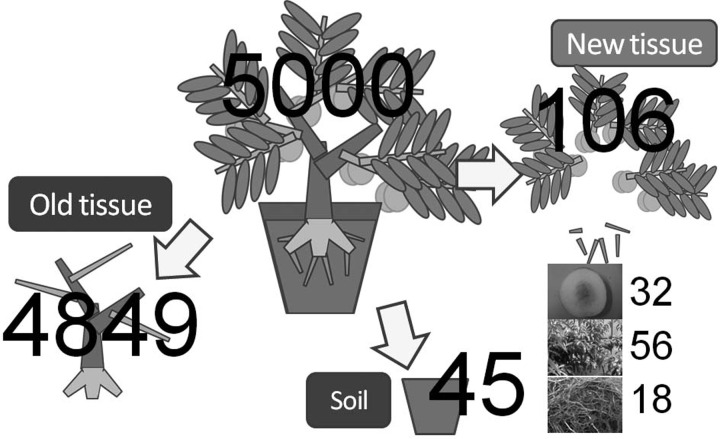Fig. 4.
Radioactive Cs movement in a peach tree [1,2]: 5 months after the accident, about half of the radioactive Cs adsorbed onto the peach tree had been moved from the surface to inside the bark. In order to find out how the radioactive Cs incorporated in the bark moves into the newly developing tissue in the following year, a 5-year-old peach tree grown in Fukushima was chosen. After removal of the twigs, leaves and fine roots, the tree was washed well and transplanted into non-contaminated soil in Tokyo and grown for a year, developing new tissues, including fruits. When the original amount of radioactive Cs incorporated into the bark was set at 5000 Bq/kg, 4849 (97%) was not moved, but remained in the old tissue, 45 was transferred to the soil by the root activity, and 106 was transferred into the new tissue. Of the 106 Bq/kg transferred into the new tissue, the relative distributions were 32 to fruit, 56 to leaves and 18 to the roots (D. Takada et al.).

